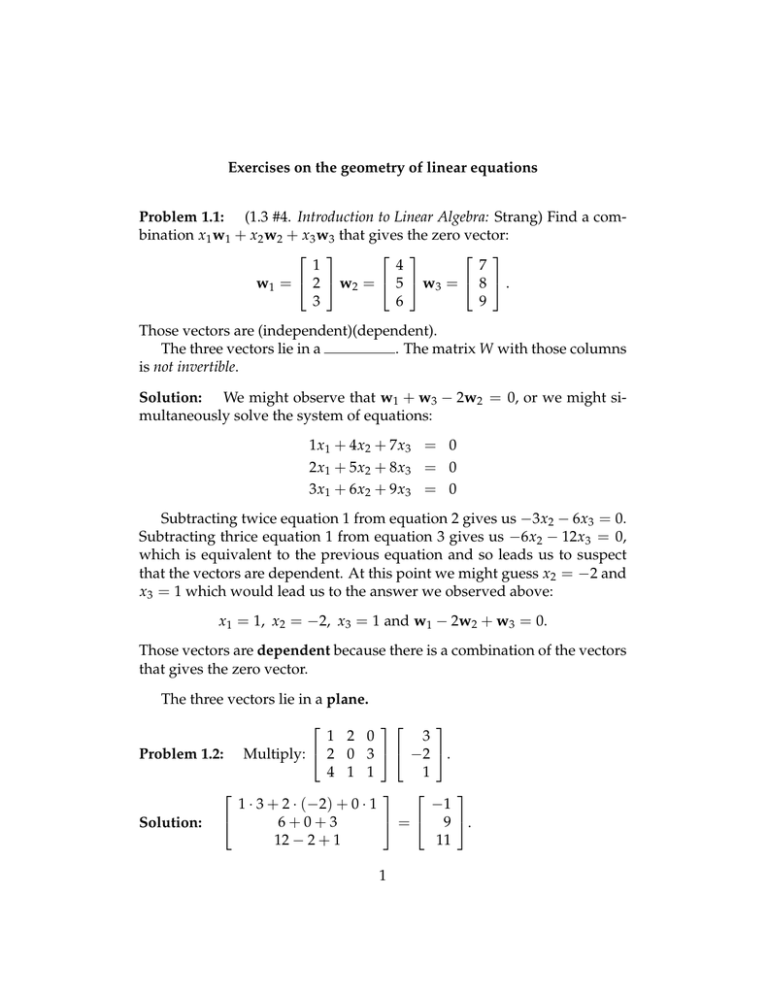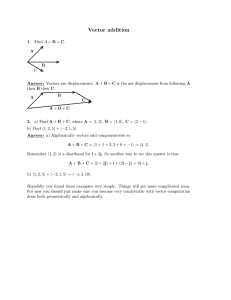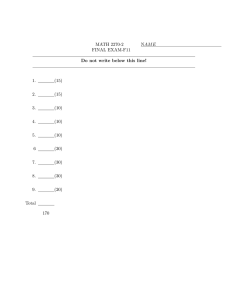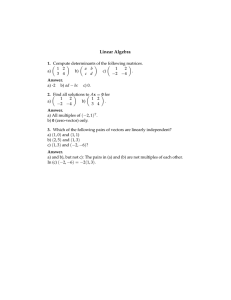+
advertisement

Exercises on the geometry of linear equations Problem 1.1: (1.3 #4. Introduction to Linear Algebra: Strang) Find a com­ bination x1 w1 + x2 w2 + x3 w3 that gives the zero vector: ⎡ ⎤ ⎡ ⎤ ⎡ ⎤ 1 4 7 ⎣ ⎦ ⎣ ⎦ ⎣ w1 = 2 w2 = 5 w3 = 8 ⎦ . 3 6 9 Those vectors are (independent)(dependent). The three vectors lie in a . The matrix W with those columns is not invertible. Solution: We might observe that w1 + w3 − 2w2 = 0, or we might si­ multaneously solve the system of equations: 1x1 + 4x2 + 7x3 = 0 2x1 + 5x2 + 8x3 = 0 3x1 + 6x2 + 9x3 = 0 Subtracting twice equation 1 from equation 2 gives us −3x2 − 6x3 = 0. Subtracting thrice equation 1 from equation 3 gives us −6x2 − 12x3 = 0, which is equivalent to the previous equation and so leads us to suspect that the vectors are dependent. At this point we might guess x2 = −2 and x3 = 1 which would lead us to the answer we observed above: x1 = 1, x2 = −2, x3 = 1 and w1 − 2w2 + w3 = 0. Those vectors are dependent because there is a combination of the vectors that gives the zero vector. The three vectors lie in a plane. ⎡ ⎤⎡ ⎤ 1 2 0 3 Problem 1.2: Multiply: ⎣ 2 0 3 ⎦ ⎣ −2 ⎦. 1 4 1 1 ⎡ ⎤ ⎡ ⎤ 1 · 3 + 2 · (−2) + 0 · 1 −1 ⎦ = ⎣ 9 ⎦. 6+0+3 Solution: ⎣ 11 12 − 2 + 1 1 Problem 1.3: True or false: A 3 by 2 matrix A times a 2 by 3 matrix B equals a 3 by 3 matrix AB. If this is false, write a similar sentence which is correct. Solution: The statement is true. In order to multiply two matrices, the number of columns of A must equal the number of rows of B. The product AB will have the same number of rows as the first matrix and the same number of columns as the second: A(m by n) times B(n by p) equals AB(m by p). 2 MIT OpenCourseWare http://ocw.mit.edu 18.06SC Linear Algebra Fall 2011 For information about citing these materials or our Terms of Use, visit: http://ocw.mit.edu/terms.



